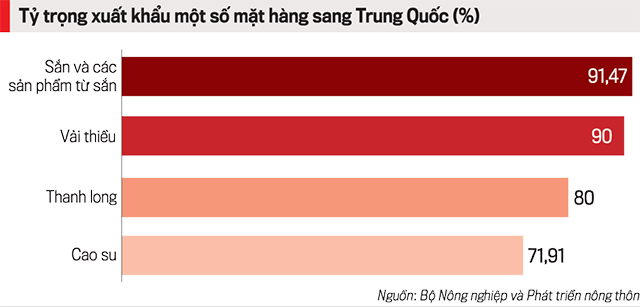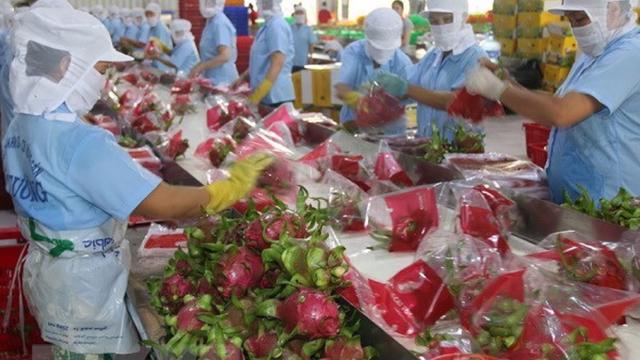[ad_1]
At the conference “Promoting Trade in Agricultural and Aquatic Products between Vietnam and China in a New Context” organized by the Ministry of Agriculture and Rural Development, the People’s Committee of Lang Son Province in cooperation with the General Customs Bureau of China and leading figures . Recently organized by Guangxi Province (China), To Ngoc Son, deputy director of the Asia-Africa Market Department (Ministry of Industry and Trade), said China is the largest export market for Vietnamese fruit, accounting for 45.38%.
With lychee accounting for 90% of the export volume overseas, dragon fruit accounts for more than 80%. Especially for cassava and cassava products, China is the largest market (91.47%); Rubber accounted for 71.91%.

THE EXPORT TO CHINA IS SUCCESSFUL
According to Mr. Son, over the years China has perfected the legal system with two amendments to the Food Safety Law and continuously strengthened law enforcement as it has worked to bring commercial activities to the market, establish order and order, and strengthen oversight rigor implementation of the regulations.
Mr. Ho Tien Thieu, chairman of Lang Son Provincial People’s Committee, said that from January 8, 2023, along with the adjustment of China’s epidemic prevention and control measures, immigration activities, traditional import and export methods at some border gates have been gradually restored. The number of agricultural products processed for import and export in January 2023 reached about 800 vehicles/day.
However, the situation of exporting agricultural products through border gates still has some problems. For example, construction and trademark registration in China for Vietnam’s agricultural and aquatic products have not been as effective as expected. The form of distribution of Vietnamese agricultural and aquatic products in the Chinese market is still mainly through the traditional trade channel, which has not yet used and promoted the e-commerce channel.
“Orders 248 and 249 are also included in China’s total import and export activities, forming a consumer protection regime that protects real businesses. From the stages of getting the planting area code, farming, packaging, transportation… are all separate”.
Mr. Lu Chao, representative of the General Administration of Customs of China.
Also, the infrastructure in the areas of border gates, logistics services in general and Lang Son in particular is still limited and has not met the development needs. Some regulations on delivery methods with China such as trailer cut-off, Covid-19 testing… also affect the capacity and cost of customs clearance.
Therefore, the leaders of the Lang Son Provincial People’s Committee proposed that the government pay attention to direct investment in synchronous infrastructure in the border area and focus on selecting a number of potential border gate areas in order to create conditions for rapid development and create momentum and regional linkages in border trade.
Regarding Orders 248 and 249, Mr. Lu Chao, representative of the General Administration of Customs of China, said that it is not a “surprise” but is based on Chinese regulations, which focus on food hygiene and safety and specify the responsibilities of each stage .
“The General Department of Customs of China is always ready to coordinate with the relevant Vietnamese authorities to ensure a healthy import-export environment. Ensuring food hygiene and safety is the overriding principle,” affirmed Mr. Super.
MANY PROPOSALS FROM CHINESE COMPANIES
At the conference, China’s representative – ASEAN Port Information Technology Group said it is focusing on expanding the “digital silk road” to support the electronics industry, start-ups that need high technology and some related industry groups.
At present, the application of information technology and digitalization for trade in agricultural products between Vietnam and China is still weak, there is a lack of information on long freight distances, digital standards in logistics are weak, as well as management capacity and goods control, mainly the lack of large warehouses abroad.
The content of the article was published in Vietnam Economic Review No. 8-2023, issued on February 20, 2023. Welcome readers to read The:
https://postenp.phaha.vn/chi-tiet-toa-soan/tap-chi-king-te-viet-nam
[ad_2]
Source link

